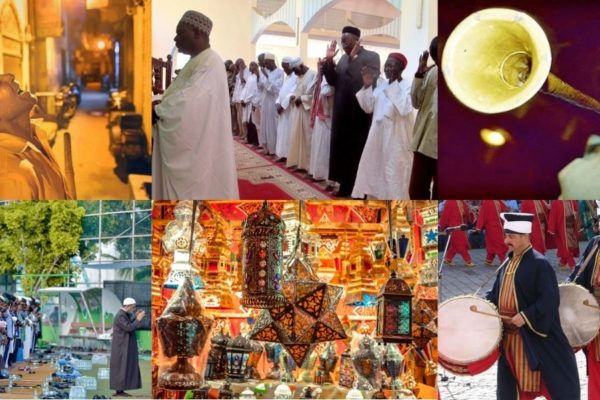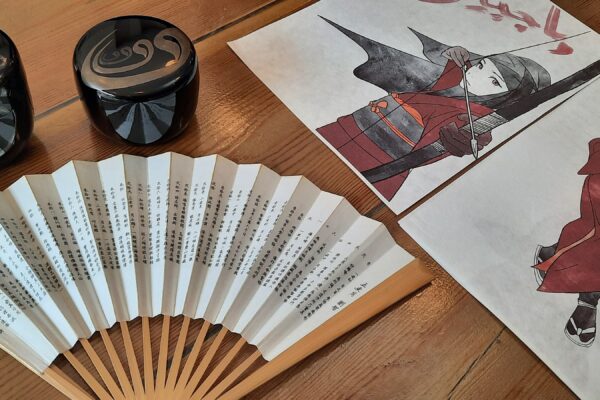Here is to celebrating, understanding, and appreciating the diversity of the Muslim world – through dessert!
Here is to celebrating, understanding, and appreciating the diversity of the Muslim world – through dessert!
There are around 1.8 billion Muslims around the world today – and as one of the fastest growing religions in the world, it is safe to say that the cultures, languages, histories, and foods of Muslim communities are one of the most diverse on earth today.
In the hopes of celebrating, appreciating, and understanding that the unique diversity of the Muslim ummah is what makes us stronger as a community and not weaker, here is a quick trip around parts of the Muslim world – in sweets and dessert. Happy snacking!
Malaysian Muslims
Malaysia is one of the largest Muslim countries in the world – with more than 60% of the population adhering to Islam, there are more than 20 million Muslims in Malaysia today.
Islam was first introduced to Malaysia in Southeast Asia through Muslim traders from India, China, and even the Arab Gulf – and much like Indonesia, the people of Malaysia quickly adopted and embraced the religion of Islam through the peaceful spread of knowledge, books, and natural curiosity.
When the Malay ruler of the 12th century, Sultan Mudzafar Shah, converted from Hinduism to Islam after being introduced to the religion from Indian traders – the path was set and Malaysia quickly became a Muslim-dominated region.
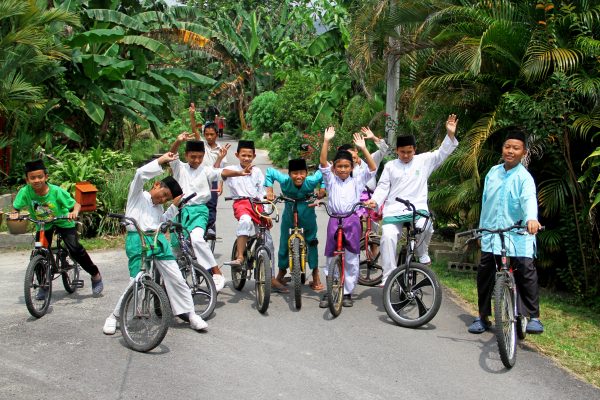
Today Malaysia is home to millions of Muslims who proudly weave together Malay culture with a deep-seated historical tie to the spread of Islam during the early days of the religion.
Growing in popularity for being a halal-friendly travel destination, Malaysia boasts not only an incredible historical and cultural significance in the Muslim world but a beautiful celebration of the power of Islam in Southeast Asia.
Seri Muka
One of Malaysia’s most beloved desserts, seri muka, has the timeless appeal of both an incredible texture as well as addicting flavor. Made from sticky rice, coconut milk, and pandan leaves – with the perfect amount of sugary goodness – these delicacies are bound to get those who try it addicted!
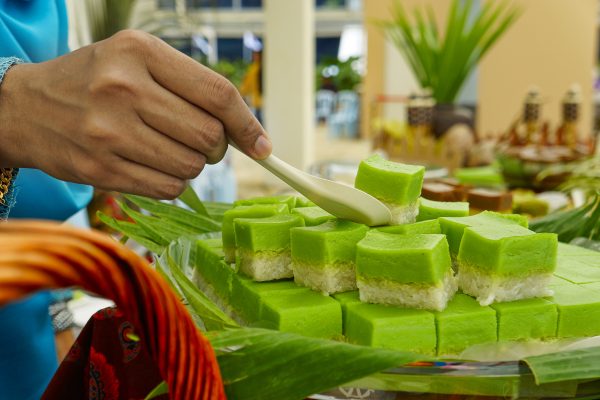
With the bottom layer forming the sticky rice and coconut base and the top layer with the pandan leaves (that gives it the incredible green color) and custard mixture, its no wonder this dessert was voted into Malaysia’s top 100 Heritage Foods and Drinks by the Malaysian Departement of National Heritage. Refreshing and tropical, this dessert itself can draw in crowds to visit Malaysia!
Sudanese Muslims
Islam remains the dominating religion in Sudan – with around 97% of Sudanese people identifying as Muslim.
With numerous different ethnic groups and sects of Islam within the country, Sudan’s power comes from its beautiful diversity. From the ethnic Nubians in the north to the Beja in the Red Sea Hills, Sudanese Muslims have prided themselves in a long and beautiful history of Islamic influence throughout the centuries.
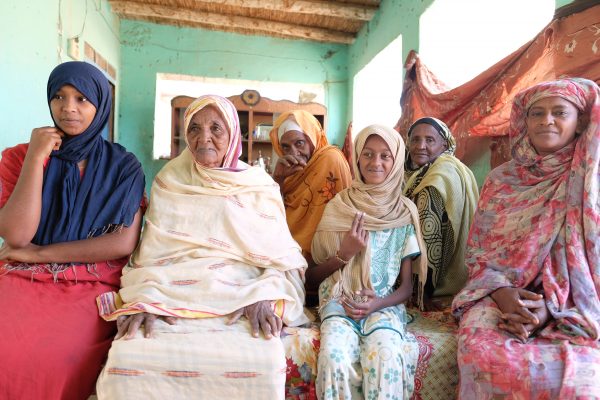
First brought to what is now Sudan after the Islamic conquest of Egypt in the 600s AD, Islam grew in popularity through the common language of Arabic – many in what is now Sudan quickly adopted to the religion not only from the Egyptian conquest but from the influence of trade, religious scholars, and the natural flow of peoples in a bustling region.
Today, although Sudan is now split into the country of Sudan and the country of South Sudan, Sudanese Muslims continue to cherish a beautiful legacy of Islamic influence and power stretching all the way back to the beginning of the Islamic empires and caliphates.
Shaaria
Sudan’s popular dessert of shaaria is loved by all generations – with its balanced crunchy-sticky goodness and flavors of sesame oil and sugar, this is a dessert only made better paired with a nice cup of strong tea. Made from pasta nests, first boiled and then fried to create a crisp and sugary delight, shaaria is usually flavored with either raisins, nuts, or coconut flakes to top off this traditional but much-loved dessert.
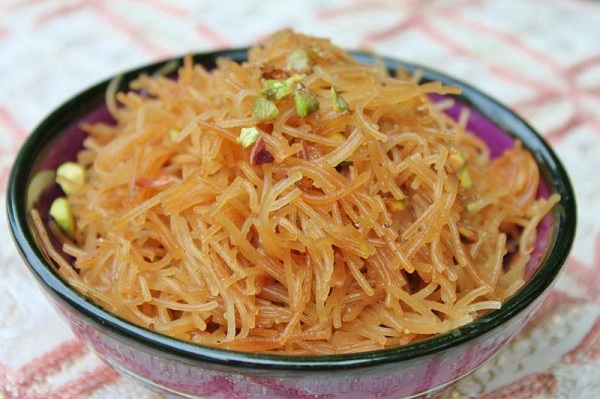
Commonly had during Ramadan, shaaria brings to life both the textures and flavors for a sweet that has a comforting feel to it – the crispy sugar and the crunch of the dessert will leave everyone wanting more!
Kazakh Muslims
Largely considered to be the northmost Muslim-majority nation in the world, Kazakhstan is home to a large population of Muslims – around 70% of Kazakhs today identify as Muslim.
Located in Central Asia’s beautiful topography as well as the historical and cultural heartland of Islam’s Golden Age, Kazakh Muslims have a long and beautiful connection with Islam from as early as the 8th century.
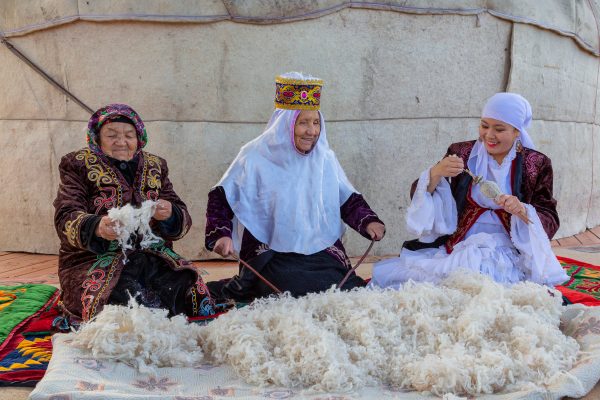
Introduced to Islam by Arabs, many Kazakhs began converting and learning about Islam from the 700s AD onward – with Arab and Persian conquests, the religion continued to grow naturally and peacefully in the region outside of the politics of empires from the influence of traders, mystics, religious teachers, and science.
With Russian influence, however, that grew heavily in the 1800s onwards, Kazakhstan saw a struggle between what would later become Soviet state-sponsored atheism and freely practicing religion for many Kazakh Muslims.
Today, after independence, Kazakh Muslims are free to openly and proudly treasure their ancient Islamic heritage – many continue to cherish their historic ties to Muslim warriors, scholars, mystics, and theologians that helped produce such an important region of the Muslim world.
Chak Chak
Chak chak is Kazakhstan’s beloved dessert – a crunch mixture of sticky honey, almonds, and fried noodle pieces, this sweet is a bit messy to eat but worth it in the end!
Although different versions of chak chak can be seen across Central Asia (with many claiming the dessert originally coming from Tartar Muslims), there seems to be a bit of a craze for it in Kazakhstan – you can buy them as pieces in the supermarket or make it as a whole cake – either way, this delightful dessert is loved by many and all.
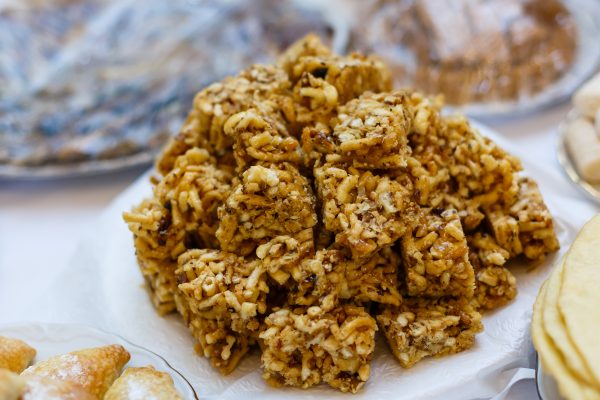
Made with doughy noodles that are fried into pieces, and layered with a honey-based syrup, chak chak can be topped or cooked with almonds – a beautiful combination of nuts, fried dough, and honey. Some choose to sprinkle powdered sugar on top for an extra dose of sugary goodness – and with a side of black tea, this will make any afternoon tea an immediate hit.
Bengali Muslims
Bengali Muslims, today predominantly living in the country of Bangladesh as well as the Indian states of West Bengal and Assam, are an ethnic-linguistic group whose ties to Islam go back centuries.
Many have documented the first introduction to Islam to be from Arab and Indian traders from the 7-8th century AD onwards. By the 12th to 16th centuries, Islam was deeply embedded in the Indian subcontinent – and the Bengal Sultanate at the height of its power in the 14th to 16th centuries was a powerful hub of trade and commerce in the Islamic East.
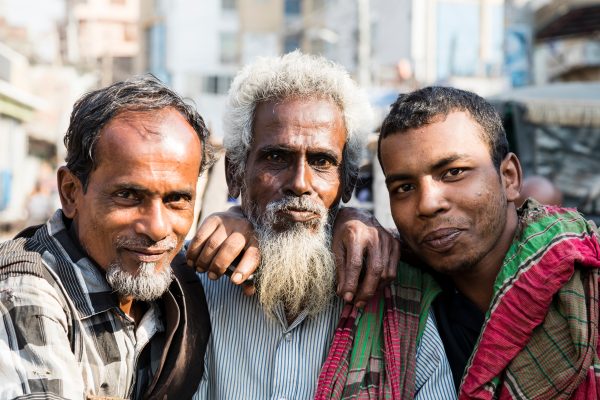
Bengali Muslims, hailing from an incredible history of the Bengal Sultanate and the spread of Islam from the Bengal region into Southeast Asia towards Malaysia and Indonesia, hold onto a powerful Islamic legacy not only in the Indian subcontinent but onto East and Southeast Asia as well.
Today, Bengali Muslims have cultural and religious influence in not only Bangladesh and India but in the countries many have migrated to such as Western Europe and the Americas – the globalized identity and heritage of Bengali Muslims remain an important part of the history of Islam not only in the past, but in the world today.
Mishti Doi
Originating from the northern Bogra District of Bangladesh, mishti doi is a widely popular dessert of fermented sweet yogurt – sweetened with either brown sugar or date molasses, this dessert is distinctly unique. Often flavored at the end with a pinch of cardamon, mishti doi is one of Bangladesh’s most beloved treats.
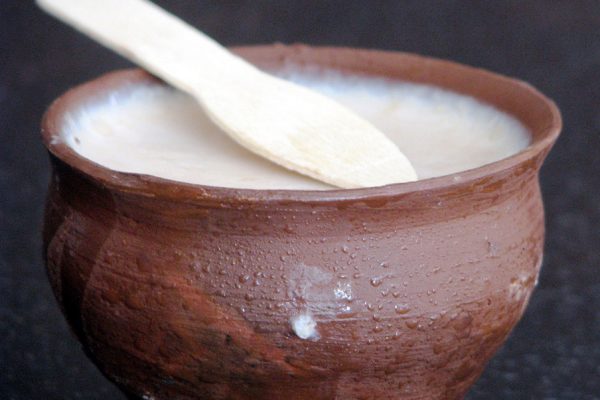
With a thick and creamy texture, paired with the slight tang of the yogurt and the sweetness of brown sugar, mishti doi is just one of the reasons why Bengali desserts and sweets are one of the most addicting on the subcontinent!
Read more from our Around the Muslim World series, in Food and Recipies, and Cities and Culture!

